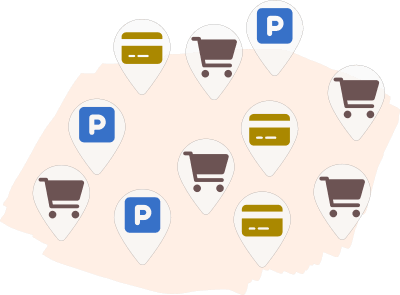
Geomarketing Tools and Location Intelligence Solutions For Marketers
Every business wants more engaged customers. Customers who buy their products and services, then come back for more. To get those engaged customers, you need to let them know about your business, and why they should spend their money with you.
Geotargeting can improve your marketing campaigns. You can reach potential customers more effectively by incorporating location data into your marketing strategy.
Contact us, and we'll help you find the best approach for using geodata for your use case.
Showing Your Customers Relevant Ads Is Key To Engagement
Think of it like this. Imagine you're at a sports event. It's half time and you're hungry. You go in search of food, and find a stand advertising snacks and cold drinks. You're delighted to find what you wanted. But if you found a stand advertising microwave meals, you'd be confused and wouldn't visit. After all, you're in a hurry. You need the food you want, right now..
It's the same for your busy customers. Relevant ads that target their needs drive interest and inspire action. Irrelevant ads don't. Geomarketing is one way to provide more relevant ads.
Geomarketing means incorporating location data into your marketing strategy, to target your ads better.
The aim is to improve your chances of putting the right message in front of the right customer at the right time.
One popular geomarketing method is Geotargeting. You use location specific data to serve content to users based on their location. You can target customers by:
- Country
- City
- State
- Zip or postal code
- Within certain boundaries or in a specific radius.
Most geotargeting marketing is done on mobile devices, but it's sometimes done cross-device.
Location based marketing is growing increasingly popular. Get on board today and start serving location targeted ads that get your customers' attention.
How Geotargeting Marketing Improves Your Campaigns
Geotargeting marketing can dramatically improve your campaigns. One report found that almost nine in ten marketers said location-based advertising and marketing led to higher sales.

And that's not all. Most respondents (86%) said location marketing helped grow their customer base. And an impressive 84% said it led to higher customer engagement.
Geotargeting means you pay attention to where your ads will be shown. You can tweak your message to fit not only your target customer, but their location too.
For example, you can set up an ad campaign to show only to customers in a specific location or radius. Some applications of geotargeting in marketing include:
- Retailers that offer free delivery in a certain radius can show ads to customers in that radius.
- Stores with promotions in specific locations can show ads to customers within a reasonable distance of that location.
- On the go services such as takeaways and cafes can show ads to nearby customers and encourage them to drop in.
- Bigger businesses with a range of locations such as real estate brokers or hotel chains can serve ads to customers near to each location.
Geotargeting Works For Online Businesses Too
Geotargeting isn't only about small businesses and physical stores. Online retailers can tailor their adverts to their customers' locations.
- A global clothing brand could show summer clothes to those in warm climates, and winter options to those on the other side of the globe.
- A meal kit service could offer promotional kits to match local holidays and events.
- Businesses of all kinds and sizes can run online promotions linked to local events, news, or weather.
You can also use geomarketing to remove potential language or cultural barriers between you and your customers. When you target ads to specific areas, change the language, currency, and cultural references to speak directly to your customers in that area.
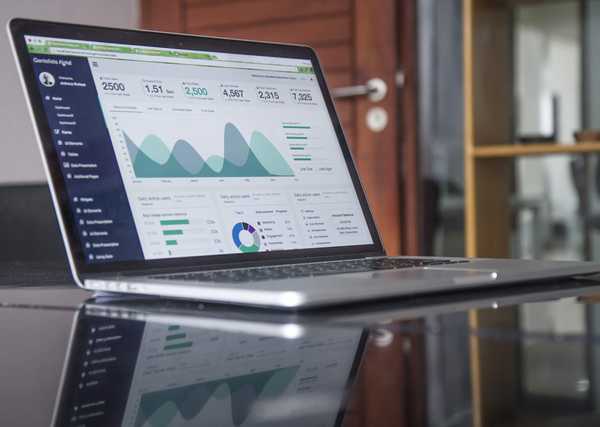
Using geomarketing in this way keeps your ads relevant and personal, creating an instant connection.
Geomarketing lets you offer personalized experiences. Personalized experiences make your customers feel seen and understood. You'll build deeper trust in your brand.
Other Ways Geomarketing Helps Your Business
-
Dynamic Pricing and Offers
Adjust pricing or promotions based on local demand, competition, or weather patterns. -
Event and Campaign Optimization
Identify high-traffic areas for hosting events or running hyperlocal marketing campaigns. -
Geo-Conquesting
Target customers near competitor locations with ads or exclusive offers to attract them. -
Efficient Logistics and Delivery
Optimize delivery routes and minimize operational costs using real-time location data. -
Localized Engagement
Create region-specific content, geofilters, or offers to boost relevance and customer connection. -
Crisis and Service Updates
Inform customers in specific regions about disruptions or changes in service due to emergencies.
Gather data to build more effective ads
Geotargeted campaigns are a gold mine of data. Use the results from geotargeted campaigns to learn more about each market segment. See what's working and what isn't, so you can readjust your ads for even more effective campaigns in the future. Geomarketing gives you location-specific insights into customer behavior, spending habits, consumer trends, demographic data and more. You can use that data to analyze your target markets for better understanding.
Examine future locations
Don't stop with your current locations. You can use geomarketing data to analyze potential future store or office locations. Take a look at spending habits and demographics, public transport, and road layouts. Figure out if a store is reachable by enough of your target customers. Use the data to figure out if a new location is worth the investment.
Run ads your competitors won't see
One little known but highly useful way to use geomarketing is running ads under your competitors' radars. If you have a physical store and you want to try out ads without letting the competition know what you're doing, geotargeting can help. Use specific targeting alongside IP exclusion to run localized ads that your competitors won't see.
Create highly targeted campaigns based on intent
You can combine geotargeting marketing with available information about your customers to create highly targeted campaigns. For example, you can take into account previous interactions and demographics to figure out interest and intent. If someone has made several previous visits to car showrooms in a specific area, they're probably planning to buy a car. You can use this information to target showroom ads to those customers the next time they visit the area.
If you want to see how effective this is in action, take a look at this geotargeting effort from Denny's.
Denny's started with using proximity targeting to reach out to customers who were near a Denny's restaurant. Their efforts were successful. Their “unlimited pancakes” promotion gave them 30% more click-throughs than the industry average.
But Denny's wanted to go beyond click-throughs into actual, measurable increases in store visits. Instead of just targeting nearby customers, they wanted to target the nearby customers who were most likely to visit the chain. They started including data about in-store behavior and previous Denny's visits in their campaigns. The result? A 34% increase of in-store visits.
Encourage customers to share data
Customers are wary of sharing personal data, especially with so many companies asking for it. One survey found that 20% of customers said promotion incentives and discounts tailored to their interests would be the most valuable benefit they could get in exchange for their personal data. Geomarketing is one way to offer the kind of personalized offers customers want.
Examples of Geomarketing and Geotargeting Solutions
Chances are you're already aware of some of the geomarketing and geotargeting solutions offered by the most famous social media brands on the globe. Let's take a look at what these six companies are offering businesses like yours.
-
Google ads. Google lets you select ad locations based on country, region, or a specific radius from a location. It also lets you target customers based on “location groups.” Location groups include places of interest, business locations, or certain demographics. For example, if you run a Colorado ski resort, you can target ads to customers showing interest in “Colorado ski vacations” or “Colorado resorts” regardless of which state they live in. Google Ads also lets you exclude locations. If you only offer shipping within Europe, you can exclude people outside of Europe from seeing the ad.
-
Twitter. You can target your Twitter campaigns towards specific countries, metros, or postcodes. If you want to capture prospects only in one state, like Boston, or a specific country like Germany, you can. Twitter uses web addresses and mobile signals to track users' recent locations.
-
Instagram. With Instagram, you can tag locations in your posts. If you want to advertise your London gym chain, tag it #London, so when users search for gyms in London, they'll see you. You can also use geotags or add stickers in your Stories to target your location.
-
Facebook. Facebook lets you select your ad reach based on country, city, or region. You can get even more specific if you target by free trade area, or other categories such as emerging markets. Facebook monitors to see if ads are performing better in some areas than others, and can reallocate your budget to show more ads in the most successful locations.
-
Snapchat. If you're looking to target a younger demographic, Snapchat's location capabilities could be for you. Snapchat lets you target to postcodes, regions, metros, states and countries. It also offers address and radius targeting. You can also target your ads to people at specific types of location, such as movie theaters or concert venues. For example, if you run a restaurant that offers pre-theater drinks and nibbles, targeting people near theaters is a smart move.
-
LinkedIn. Linkedin has geographic location targeting as a required field when you sign up for ads. You can target your ads based on specific countries, regions, or states. You can also choose to exclude specific areas. Rather than targeting mobile data, LinkedIn looks at the permanent or long-term location specified by users, and targets those.
How Geoapify Helps You with Geomarketing and Geotargeting
Geomarketing and geotargeting give your business a competitive advantage, but how do you get started?
Geoapify has the tools you need for more effective geomarketing and geotargeting. To get the results you want, you need high-quality, actionable data. Geoapify helps you collect, analyze, and use this data effectively.
Here's how Geoapify empowers your business:
-
Understand Your Audience's Location: Use our IP Geolocation API to pinpoint a customer's location up to the city level. This enables you to target ads, promotions, and content to customers within a specific geographic area. For instance, you can create location-based offers for customers near your store or event.
-
Leverage Points of Interest with the Places API: Our Places API provides access to over 500 categories of places, including restaurants, tourist attractions, hotels, and leisure spots. Query these places and display them on a map to showcase nearby amenities, guide customers to your locations, or highlight where special deals are available. This data can also be used to enhance apps with location-aware content.
-
Analyze Reachability and Optimize Campaigns: Use our Isoline API to calculate reachability from specific locations based on time or distance. This allows you to answer questions like, "How many potential customers are within a 10-minute drive of our new store?" or "What amenities are reachable within 15 walking minutes from a city center?" This insight helps you target the most viable campaigns and allocate resources efficiently.
-
Gather Statistical and Geospatial Data: Geoapify provides statistical and geospatial insights for specific locations. Find data on population density, building distribution, types of amenities, and more. This information can guide decisions on where to expand, focus campaigns, or understand customer behavior. If you need help collecting or analyzing geospatial data, our experts are here to assist.
-
Create Hyper-Focused Ad Campaigns: Customers are overwhelmed with ads daily. Stand out by using geomarketing and geotargeting to create hyper-relevant campaigns tailored to their needs and preferences. With Geoapify’s tools, you can deliver ads that matter, maximizing engagement and conversion while making the best use of your advertising budget.
-
Benefit from Expert Tools and Support: Geoapify offers user-friendly tools and reliable APIs for geomarketing and geotargeting. Our free playgrounds make testing and experimenting simple, while our experts are available to provide guidance and solutions tailored to your business needs.
Why Choose Geoapify?
Geoapify is built to empower businesses of all sizes. With scalable tools and detailed geospatial data, we make it easy to incorporate geomarketing and geotargeting into your strategy. Whether you're a small business owner or part of a large enterprise, Geoapify ensures you have the insights and resources you need to succeed.
Key Features of Geoapify APIs:
-
Realtime Data
Access up-to-date location and market information to make informed, timely decisions. -
Cost-Effective Solutions
Flexible pricing plans ensure accessibility for businesses of all sizes. -
Easy to Use
Intuitive APIs with extensive documentation make integration seamless, even for non-technical teams. -
Cross-Device Compatibility
Works effortlessly on various devices, ensuring a consistent experience across platforms. -
Answers Complex Questions
Delivers insights on intricate queries such as customer behavior patterns, optimal service areas, and demand forecasting.
Why Geoapify Stands Out:
- Scalability: Whether your project is small or large, Geoapify provides tools that grow with your needs.
- Comprehensive Geospatial Data: Gain access to robust and detailed data to fuel precise decision-making.
- Innovation and Reliability: Geoapify is committed to continuous improvement, ensuring you always have cutting-edge geomarketing solutions.
- Support and Guidance: Our team is always ready to help you navigate and implement the best geospatial tools for your business.
Start using Geoapify today, or contact us to explore the best geomarketing solutions for your business.
Geomarketing Tutorials
Get started with geomarketing using Geoapify's APIs by exploring the following tutorials:
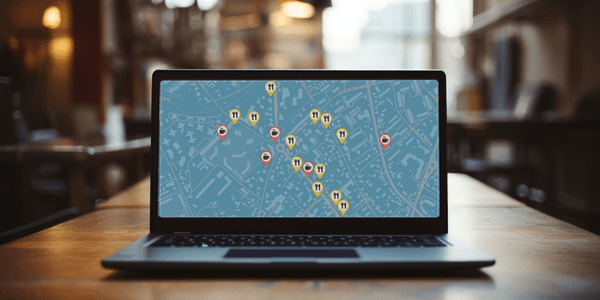
Boosting Business Visibility: OpenStreetMap for Local Marketing
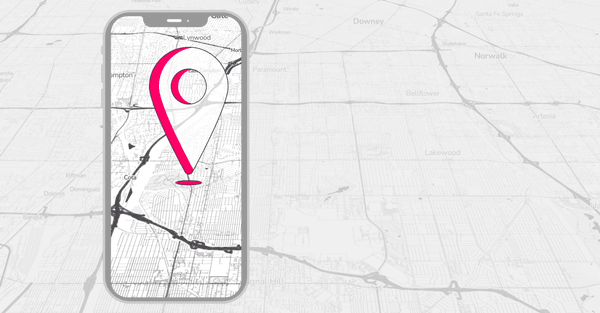
What is Geolocation: How It Works and Its Many Uses
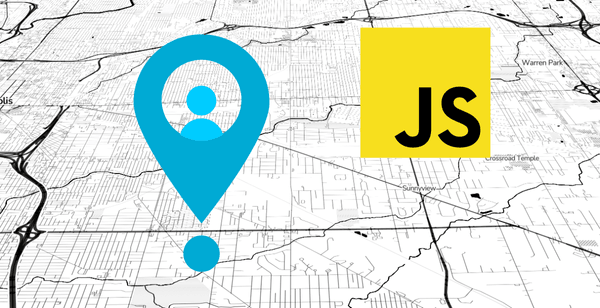
How to Get User Location with JavaScript: A Comprehensive Guide
Still not sure how to start? If you're facing any problems or have questions, we're here to help! Contact us, and we will be happy to assist.
FAQ
What is Geoapify's Geomarketing API, and how does it help businesses?
Geoapify's Geomarketing API provides advanced geospatial tools to analyze, target, and engage customers based on location data. It helps businesses create personalized marketing campaigns and optimize operations.
Can I use Geoapify's tools for small-scale projects?
Yes, Geoapify offers flexible pricing plans and a free plan with up to 3000 credits per day, making it accessible for businesses of all sizes.
What industries benefit the most from Geoapify's solutions?
Industries like retail, logistics, real estate, and tourism can benefit significantly from Geoapify's geomarketing and geospatial solutions.
Is Geoapify's service GDPR-compliant?
Yes, Geoapify complies with GDPR regulations and ensures that all user data is handled securely and transparently.
How do I integrate Geoapify APIs into my application?
Geoapify APIs are easy to integrate using HTTP GET requests. Comprehensive documentation and code examples are available to help you get started.
Can I store and use data retrieved from Geoapify?
Yes, as Geoapify uses open data, you can store and reuse results, provided you follow the required attribution guidelines.